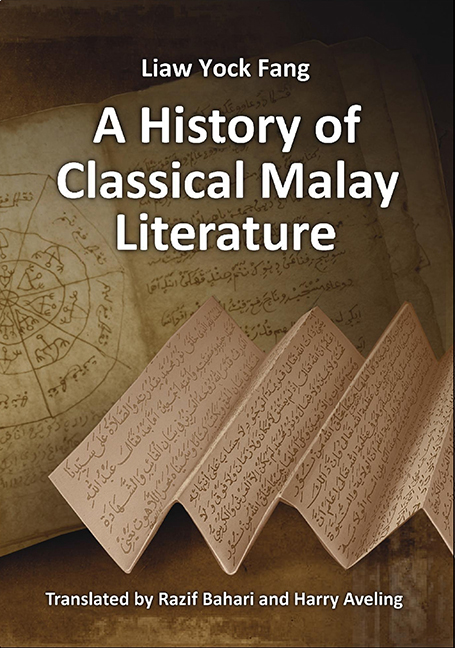Book contents
- Frontmatter
- Contents
- Preface
- List of Abbreviations
- Chapter I Folk Literature
- Chapter II The Indian Epics and The Wayang in Malay Literature
- Chapter III Javanese Panji Stories
- Chapter IV Literature Belonging to the Period of Transition from Hinduism to Islam
- Chapter V Literature of the Islamic Age
- Chapter VI Framed Narratives
- Chapter VII The Literature of Islamic Theology
- Chapter VIII Historical Literature
- Chapter IX Classical Malay Law Codes
- Chapter X Poetic Forms (Pantun and Syair)
- Bibliography
- Index
- Biographical Details
Chapter VI - Framed Narratives
Published online by Cambridge University Press: 21 October 2015
- Frontmatter
- Contents
- Preface
- List of Abbreviations
- Chapter I Folk Literature
- Chapter II The Indian Epics and The Wayang in Malay Literature
- Chapter III Javanese Panji Stories
- Chapter IV Literature Belonging to the Period of Transition from Hinduism to Islam
- Chapter V Literature of the Islamic Age
- Chapter VI Framed Narratives
- Chapter VII The Literature of Islamic Theology
- Chapter VIII Historical Literature
- Chapter IX Classical Malay Law Codes
- Chapter X Poetic Forms (Pantun and Syair)
- Bibliography
- Index
- Biographical Details
Summary
There are various famous framed narratives (cerita berbingkai) in Malay literature, including the Hikayat Bayan Budiman, the Hikayat Kalilah dan Dimnah and the Hikayat Bakhtiar. The framed narrative is said to have originated from India and traveled to the Archipelago along a number of different paths. Such works often contain several stories within the main story itself. Usually one or more characters in the story narrates the tale and then a character in that inner tale will take over the further narration, as a way of substantiating or corroborating the previous story. The inner or smaller story will, in turn, contain further sub-stories that will add to the further length and breadth of the story as a whole. For example:
To illustrate the danger of trusting one's enemies, a teacher told the story of an owl and a crow. A crow once had its feathers plucked by its king; it fled, seeking refuge with the king of owls. A minister in the owl's court advised the king to kill the crow since one cannot, the minister argued, change the nature of the crow, just as one cannot change the nature of the mouse according to the tale of the mouse who became a human being. He then proceeded to tell the tale of the mouse who, in her human form, was asked to choose a husband; she chose a mouse. Another minister related another story, designed to convince the owl king to take advantage of the quarrel between the crow and its king. This story described a hermit who, because his enemies were busy fighting among themselves, took the opportunity to escape from their clutches and save himself.
Another characteristic of the framed narrative is that its animal characters are often given human qualities. These animals are not only expert story-tellers, they are also adept at giving advice to their masters on various human problems.
- Type
- Chapter
- Information
- A History of Classical Malay Literature , pp. 264 - 299Publisher: ISEAS–Yusof Ishak InstitutePrint publication year: 2013

